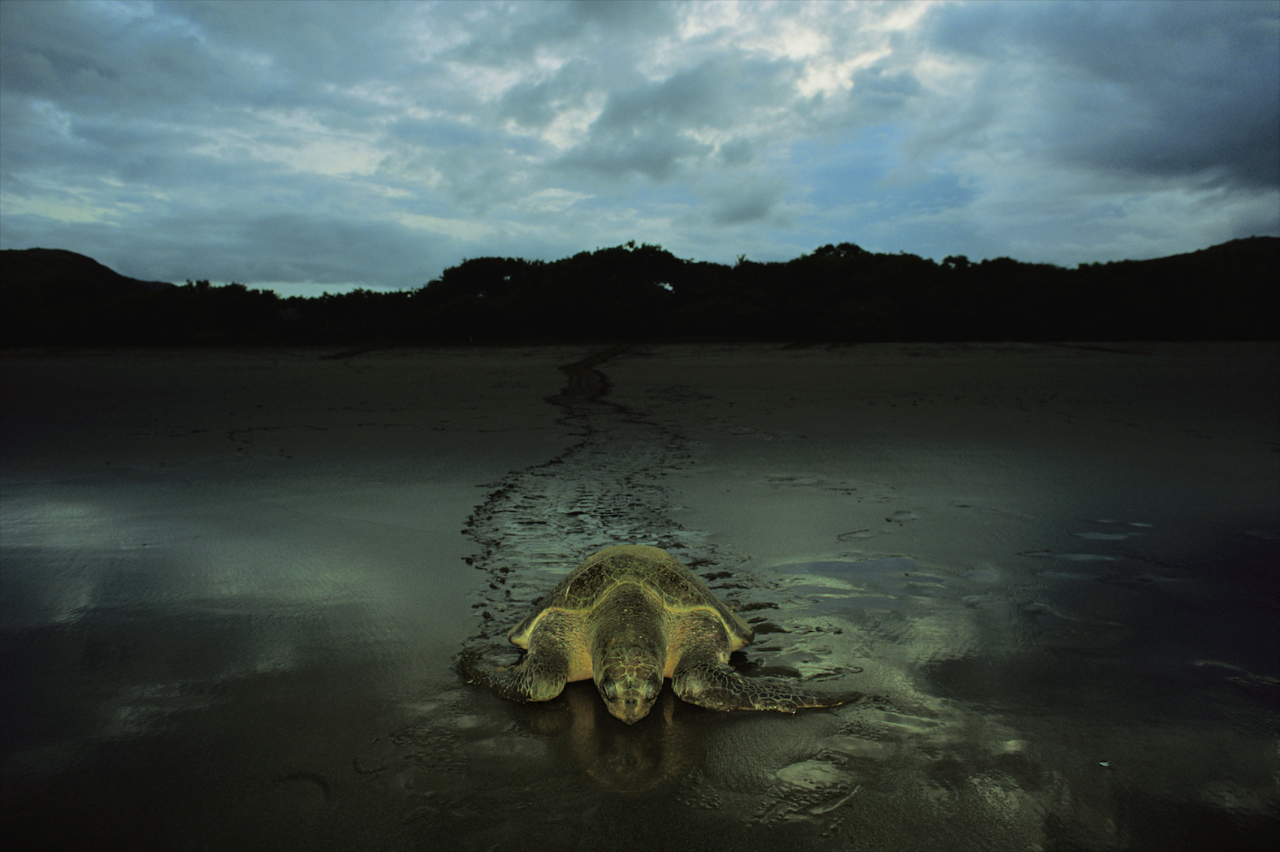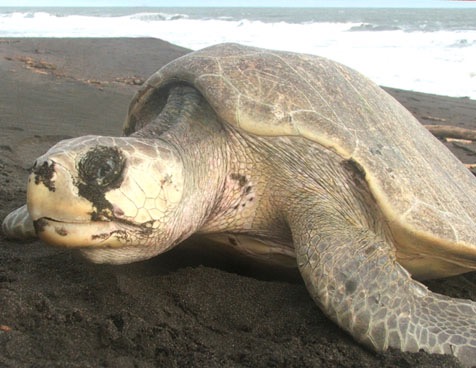
Olive Ridley Sea Turtles
The second smallest after the Kemp’s ridley, the olive ridley turtles weigh between 75-100 pounds (34 - 45 kg) and reach 2-2 ½ feet (roughly .6 m) in length. They are named for their pale green carapace and are the most abundant of sea turtle species.
Like the Kemp’s ridley, olive ridleys nest in mass referred to as an “arribada.” During arribadas, thousands of females may nest over the course of a few days, generally once a month for p. Adults reach sexual maturity around the age of 15 years.
Olive Ridley Facts & Tidbits
There are only a few places in the world where olive ridley arribadas occur (see Distribution below for sites). In other parts of the world, they are solitary nesters.
Though arribadas are not well understood, the timing is thought to coincide with weather events such as strong winds or cloudy days, or with moon and tide cycles. The turtles congregate in large groups offshore of nesting beaches and then simultaneously come ashore to nest. Females may remain offshore near nesting beaches throughout the nesting season.
These turtles are omnivores, eating a variety of prey including crabs, shrimp, lobster, urchins, jellies, algae, and fish. In Baja California, Mexico, their preferred prey is the red crab which is abundant in offshore waters. Learn more about their diet.
Despite their relative abundance in comparison to other sea turtles, this species is considered Vulnerable by the IUCN Red List and is listed as Threatened in the US.
Although they are the most abundant species, their numbers have decreased by approximately 50 percent since the 1960’s. Their scientific name is Lepidochelys olivacea.
Distribution
Olive ridleys occur globally and are found mainly in tropical regions of the Pacific, Indian, and Southern Atlantic Oceans. They are primarily pelagic, spending much of their life in the open ocean, but may also inhabit continental shelf areas and venture into bays and estuaries.
Arribadas occur in Mexico, Nicaragua, Costa Rica, Panama, Australia, parts of Africa, and a few beaches along the coast of India. The largest ones occur in Costa Rica, Mexico, and India. Nicaragua has a significant beach in La Flor Wildlife Refuge. Other solitary nesting areas include Guatemala, Brazil, Myanmar, Malaysia, and Pakistan. Worldwide, they nest in approximately 40 countries.
Major Threats
Threats to olive ridleys include the direct harvest of turtles and eggs for human consumption, entanglement of turtles in commercial fishing gear, and coastal development.
Did You Know?
It’s unknown why some turtles nest in arribadas and others are solitary nesters. Some use both strategies during a single nesting season, nesting in both groups and alone.
Because this species congregates in large numbers off of nesting areas, they are prone to mass mortality events.
In Central America, it’s estimated that more than 60,000 sea turtles, mainly olive ridleys, are caught and drowned in shrimp trawl nets each year. (Arauz 1996)
What is SEE Turtles?
We're a non-profit organization that protects sea turtles through conservation travel and volunteer tours, our Billion Baby Turtles and Too Rare To Wear programs, our education programs, and by promoting inclusivity in the sea turtle community. Our award-winning programs help save sea turtle hatchlings on important nesting beaches around the world, work with the tourism industry to end the turtleshell trade, and educate students and travelers about how to help save sea turtles. Learn more about our organization.
Photo credits: Steve Winter, Michael Jensen, Scott Handy


